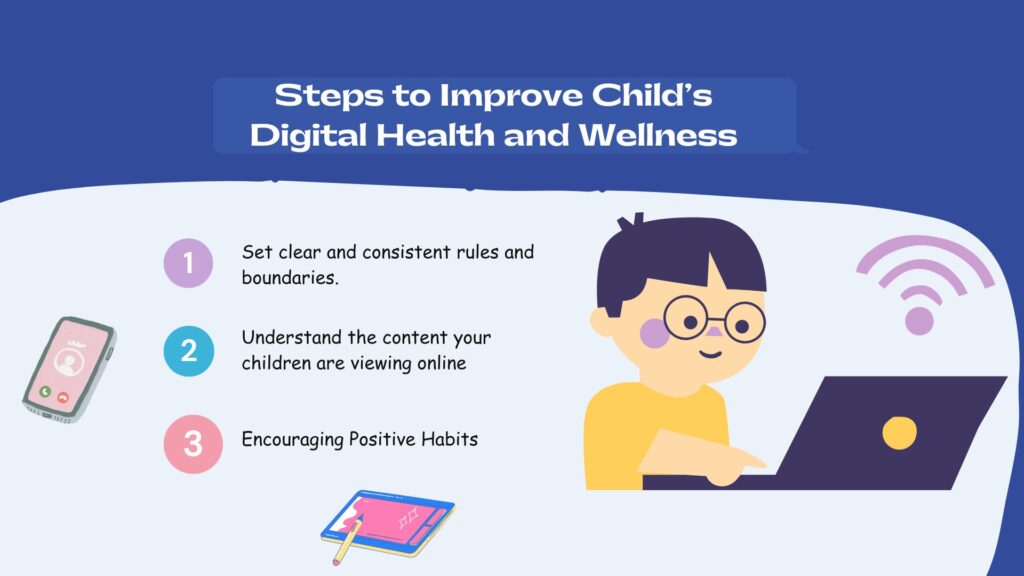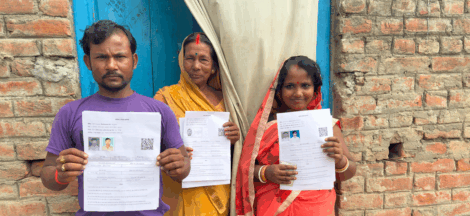By Dr. Gyan Pathak
Digital technologies and media offer children numerous opportunities to learn, play, connect with friends, and gain gradually independence. However, excessive or problematic use of digital technologies raises concerns about negative impacts on their health, learning ability, and well-being, says the latest OECD report titled “How’s Life for Children in the Digital Age?”
A substantial body of evidence suggests that excessive screen time may negatively impact several aspects of the physical health of children and adolescents, including sleep quantity and quality, adolescents’ physical activity, and risk of overweight and obesity, warns the report. The evidence is less clear-cut regarding possible eyesight problems, such as the development of myopia and potential risks to the retina from blue light exposure. Nevertheless, given the potential severity of harm to adolescents’ health and wellbeing, pre-emptive action is needed, the report recommended.
In the early years, active engagement with digital devices, such as e-books, when accompanied by interactive involvement from parents and caregivers, can promote emerging literacy, verbal skills, and language development. However, excessive and passive screen exposure can negatively impact neurocognitive development due to the brain’s high plasticity and vulnerability, particularly during the early years.
Digital resources offer school age children and teenagers gets opportunity to learn and to create. Digital platforms, online games, social media apps, and other digital services also offer children numerous opportunities for enjoyment and getting support, providing easy access to information, discreetly answering their questions, and offering online support not available offline. Social media allows them to connect with peers, share ideas, seek moral support, and engage in meaningful social interactions. However, the enjoyment and benefits for socio-emotional well-being of digital tools are maximised with moderate use.
Digital media can pose risks to children and adolescents’ mental health through direct pathways, warns the report, such as reduced in-person social connection, exposure to harmful or idealised online content, and online abuse or bullying, as well as secondary effects like sleep deprivation and decreased physical activity, which can exacerbate mental health challenges. However, evidence linking digital technology use directly to mental health problems is not definitive because it relies on limited, partly inappropriate sources of evidence.
Population-based research often shows only moderate effects and is mainly correlational, lacking clear causal relationships. While some studies suggest negative impacts, others indicate some positive or no effects for the majority of adolescents. Nevertheless, a minority of adolescents may be vulnerable to negative impacts on their well-being due to excessive or problematic use of digital media and “hyper connectivity” – i.e. the constant, often overwhelming, access to and interaction with digital media.
Digital technologies have transformed how children communicate, offering both benefits and new risks, particularly for mental health. Online interactions often involve anonymity, disembodiment, and disinhibition, leading to negative behaviours such as cyberbullying, excessive Internet use, and problematic social media use, with immersive technologies potentially amplifying these effects.
Research on children’s Internet use highlights challenges in measuring activity-specific impacts, often focusing on overall use and its links to well-being. Problematic Internet Use (PIU) is associated with negative outcomes like depression, anxiety, loneliness, strained relationships, and reduced academic performance, with some evidence suggesting that poor mental health may also contribute to PIU. Gender differences show boys may experience stronger links between PIU and loneliness, potentially due to usage patterns like gaming, while family adversity, such as maltreatment or parental conflict, increases the risk of PIU as adolescents turn to online spaces for escape.
Video games, like social media, are designed to maximise engagement, making children particularly vulnerable to persuasive features that encourage prolonged use, potentially leading to problematic gaming behaviours that affect personal and social well-being. Boys are more prone to gaming disorders and girls to problematic social media and mobile phone use.
Studies reveal that a significant minority of adolescents struggle with excessive video gaming, often reporting stressor anxiety when unable to access these activities. Certain game genres, particularly immersive ones like Massively Multiplayer Online Role-Playing Games, Multiplayer Online Battle Arenas, Real-Time Strategy Games, are strongly associated with gaming disorders. Additionally, structural features of games, such as in-game rewards that trigger dopamine release and the unpredictability of these rewards, play a key role in reinforcing prolonged gaming sessions and sustaining gaming disorders. Family dynamics, including neglectful, authoritarian, permissive parenting styles are also associated with higher levels of gaming disorders.
Research shows that excessive social media use, especially beyond two hours a day, is linked to negative mental health outcomes, including depression, anxiety, body image concerns, and poor sleep, with girls often being more affected. Factors such as social comparison, exposure to idealised images, and cyberbullying increase the likelihood of a negative association between social media use and subjective well-being.
The impact of social media varies based on content type, with positive content linked to better well-being and negative content exacerbating mental health issues. Social media use can also lead to addiction-like behaviours and social media induced stress, particularly among vulnerable adolescents, such as those with minoritised identities or those facing offline vulnerabilities. While social media offers benefits like online support communities, it can also heighten feelings of isolation and worsen mental health, particularly when used for comparison or as an escape from real-world interactions. Personality traits and individual motivations for social media use also shape the extent of these effects.
Governments are responsible for establishing regulations and standards that digital service providers must adhere to and can also encourage the incorporation of protective measures into the design of digital services and devices, the report says.
Teachers, schools, and education systems play a crucial role in helping children develop digital literacy and citizenship skills, understand digital risks, and manage problematic situations online. They can also help raise awareness among parents about the risks associated with excessive screen time, video games, and intensive use of social media. This support is especially important for children without parental or familial guidance in digital spaces.
Schools also face the challenge of preventing mobile phones from disrupting learning. Banning phones in class can reduce distractions and improve focus, but enforcing these bans outside the classroom is difficult. Allowing local adjustments to manage the bans can make them more effective. The reports also recommends parents guidance and control on use of smartphones by children. (IPA Service)




 Donald Trump’s United States And Narendra Modi’s India – The Big Difference
Donald Trump’s United States And Narendra Modi’s India – The Big Difference 